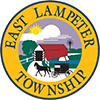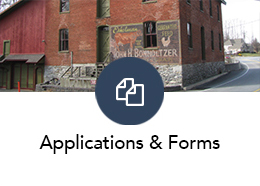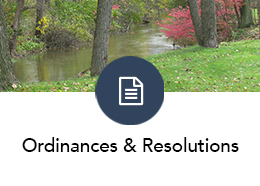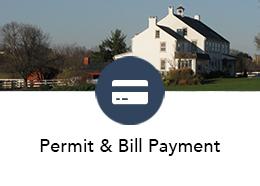What is Stormwater Runoff?
Stormwater runoff is the water that flows off the land or impervious surfaces, such as paved streets, parking lots, and or building rooftops after precipitation, either rain or snowmelt. Rain or snow can drain down into the soil (called infiltration), evaporate back into the atmosphere, be used by plants, or flow into streams or water bodies.
Stormwater runoff can cause flooding, erosion of streams, property damage, pollution, sediment build up in our local watersheds and negative impacts to the Chesapeake Bay. Best Management Practices (BMPs) are designed and constructed to manage stormwater. Homeowners can reduce stormwater runoff from their property by implementing BMPs. For more information regarding the Homeowners Guide to Stormwater BMP Maintenance, please click on the link below.
Stormwaterguide.org – The Homeowner’s Guide to Stormwater
Why is Stormwater regulated?
Since 1972, implementation of the Clean Water Act (CWA) has shown success in controlling water pollution from point sources such as municipal wastewater treatment plants and industrial discharges. This progress is overshadowed, however, by the emergence of nonpoint source pollution as a main contributor to water quality problems. Nonpoint source (NPS) pollution comes from many diffuse sources. NPS pollution originates when rainfall or snowmelt moves over and through the ground. As the runoff moves, it picks up and carries away natural and human-made pollutants, finally depositing them into lakes, rivers, wetlands, coastal waters, and even underground sources of drinking water. These pollutants include:
■ Excess fertilizers, herbicides, and insecticides from agricultural lands and residential areas.
■ Oil, grease, and toxic chemicals from urban runoff.
■ Sediment from improperly managed construction sites, crop and forest lands, and eroding stream banks.
■ Bacteria and nutrients from livestock, pet wastes, wildlife, and faulty septic systems.
■ A myriad of other pollutants originating with a wide variety of land-based activities.
■ Rain water is also a source of nonpoint source pollution.
For urban and urbanizing areas, these problems can largely be traced to activities that occur on the land. Whether the problem arises from lawn care chemicals, or motor oil and toxic metals from parking lots and streets, stormwater plays a large role in transporting pollutants to streams, drinking water sources, and other receiving water bodies.
Why Stormwater? While land development necessarily involves creation of impervious surfaces, how and where development takes place can influence the ultimate degree of environmental impact from the streets, rooftops, and yards. Where development has occurred on forest and undeveloped land, critical areas for infiltration and aquifer recharge that soaked up rainwater prior to development now export runoff to lower lying areas and local receiving water bodies. Water flowing over pavement absorbs heat, which impacts waterways that support cold water species. It also flows faster, thus delivering water in pulses. The faster flows can scour stream banks and accelerate erosion, while increased temperatures can spur excessive growth of algae. The higher rate of vegetative growth can interfere with a variety of ecological, industrial and water filtration processes. Conventional construction practices have relied on mass clearing and grading. This practice compacts the soil surface and further prevents infiltration, even on lots overlain with turf. Thus, the generation of stormwater volume, as well as the pollutant load carried in that volume, is very much tied to how and where land is developed.
Who regulates Stormwater Runoff?
In 1972, Congress amended the Federal Water Pollution Control Act (subsequently referred to as the Clean Water Act) to control the discharges of pollutants to waters of the United States from point sources. Initial efforts to improve water quality using the National Pollution Discharge Elimination System (NPDES) focused primarily on reducing pollutants from industrial process wastewater and municipal sewage discharges. These sources were easily identified as responsible for poor—often drastically degraded—water quality conditions. As pollution control measures for industrial process wastewater and municipal sewage were implemented and refined, it became increasingly evident that more diffuse sources of water pollution were also significant causes of water quality impairment. Specifically, stormwater runoff was found to cause serious pollution problems. As a result, Congress added section 402(p) of the Clean Water Act, which established a comprehensive, two-phase approach to stormwater control using the NPDES program. In 1990 EPA issued the Phase I stormwater rule (55 FR 47990; November 16, 1990) requiring NPDES permits for operators of municipal separate storm sewer systems (MS4s) serving populations greater than 100,000 and for runoff associated with industrial activity, including runoff from construction sites 5 acres and larger. In 1999 EPA issued the Phase II stormwater rule (64 FR 68722; December 8, 1999) that expanded the requirements to small MS4s in urban areas and to construction sites between 1 and 5 acres in size. EPA has delegated NPDES permitting authority to all but five states, several territories, the District of Columbia, federal facilities in four states, and federal tribes. NPDES permits are reissued every five years to allow for modifications to meet changing conditions both with the discharge and with discharge standards and regulations. There are two standard types of NPDES permits:
1) An individual permit is issued to a single discharger, with customized requirements for that particular discharge. All Phase I MS4 permits are individual permits.
2) General permits are usually statewide permits with requirements that apply to all discharges of a particular type or category. Most Phase II MS4 permits are general permits and require each permittee to develop a stormwater management plan that details how stormwater discharges from that particular MS4 will be controlled. Though they are not framed identically, the stormwater management requirements for Phase I and Phase II MS4s are very similar. To learn more, visit EPA’s stormwater program site at – https://www.epa.gov/npdes.
How does East Lampeter Township manage Stormwater Runoff?
East Lampeter Township contains extensive stormwater system infrastructure that conveys stormwater through storm drain inlets, pipes, swales, and structures that discharge into surface waters such as rivers and streams. This system is called a Municipal Separated Storm Sewer System (MS4) which places additional responsibilities upon municipalities like the Township. We operate under an MS4 Permit issued by the Pennsylvania Department of Environmental Protection (PADEP) under the National Pollution Discharge Elimination System (NPDES) provisions of the Federal Clean Water Act. Additional information about the Township’s permit activities and responsibilities can be found under section Stormwater Management Program-MS4.
What is a Watershed?
A watershed is the area of land that catches rain and snow and drains to a specific body of water, whether a steam, pond, lake, river, bay, wetland or ocean. A watershed area can be as large as many states or as small as your backyard. A watershed affects the water quality in the water body that it surrounds. Healthy watersheds provide clean drinking water, productive fisheries, and outdoor recreation that support our economies, economics, and quality of life. Everyone lives in a watershed. Local link below:
Please click on the links below for more stormwater information such as general stormwater/conservation, your local watersheds, homeowner’s guides, educational links, private organizations and government agencies.
Lancaster County Water Quality & Stormwater Basics
Water Conservation ideas that protect our Watersheds
Stormwater and Floodplains Educational Booklet
The Chesapeake Bay in Lancaster County
Residential Backyard/Lawn Booklet
Native Species for Use in Vegetative Stormwater BMP’s
Reducing Impervious cover & Promoting Infiltration
East Lampeter Township Watersheds
Mill Creek Watershed Association
Conservation District Resources
Lancaster County Conservation District
Field Guide: for NPDES Permits, Erosion Control, and Post Construction Management
Stream bank fencing and stream crossings
Stormwater BMP”s and Smart Growth Techniques
Video Links
The Homeowner’s Guide to Stormwater Video Series
Educational Links
Play on Facebook, an interactive game by Alliance for the bay.
The Homeowner’s BMP and Operations and Maintenance Guide
The Homeowner’s Guide to Stormwater
The Penn State Agriculture Extension
Miscellaneous Websites
Center for Watershed Protection
Lancaster Clean Water Partners
The Stroud Watershed Research Center
The Chesapeake Stormwater Network
The Municipal Online Stormwater Training (MOST) Center Website
State Websites
The PA Dept. of Environmental Protection (PA DEP) PA Phase 3 Watershed Implementation Plan (WIP)
The PA DEP Countywide Action Plans (CAP)
The PA DEP Construction Site Stormwater Management (includes the BMP & E&S manuals)
DEP Stormwater Best Management Practices Manual
Federal Websites
The U.S. Environmental Protection Agency (EPA) MS4
The National Fish and Wildlife Foundation
The U.S. Geological Survey Chesapeake Bay
The U.S. Army Corps. Of Engineers Chesapeake Bay Comprehensive Plan






